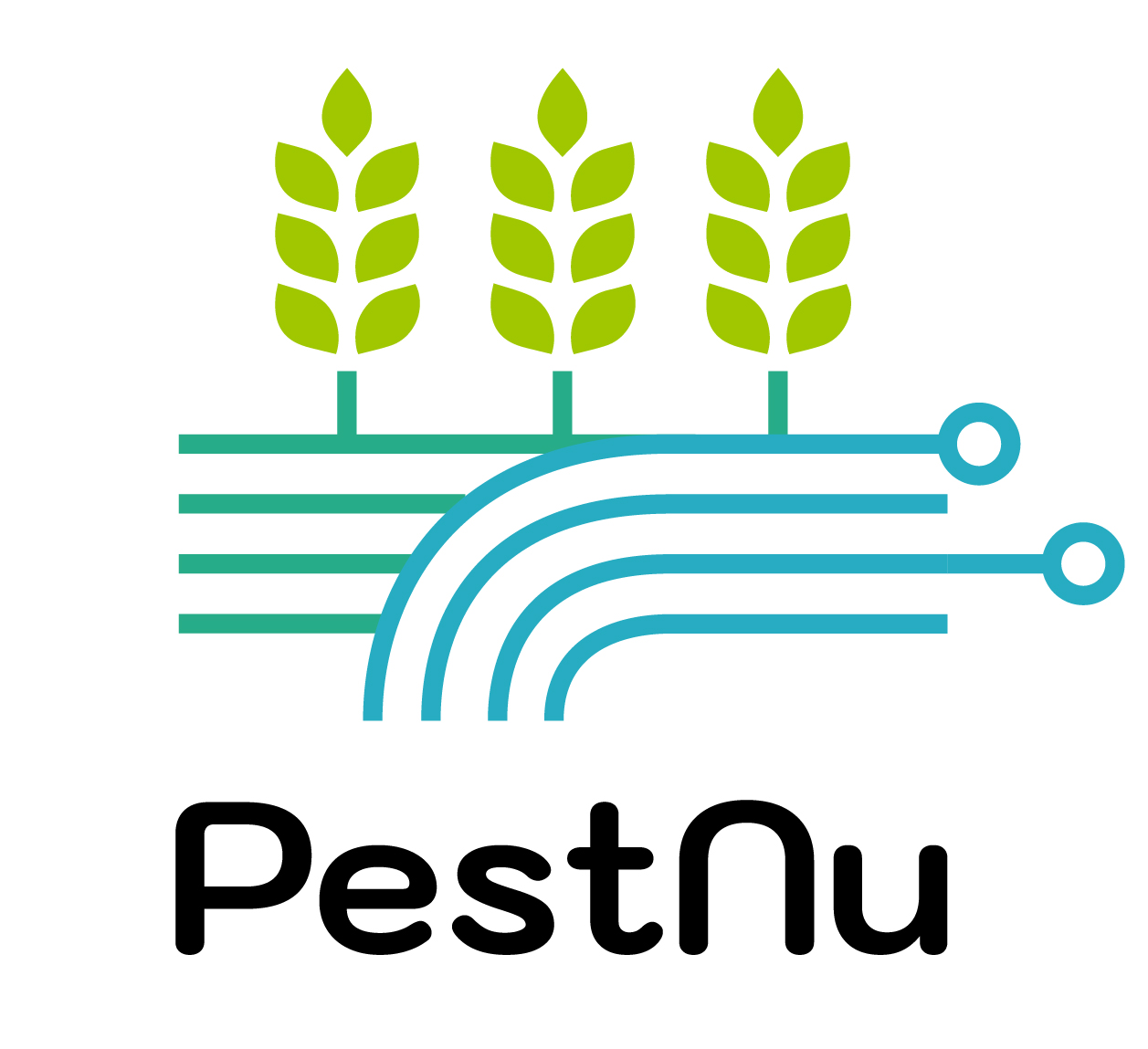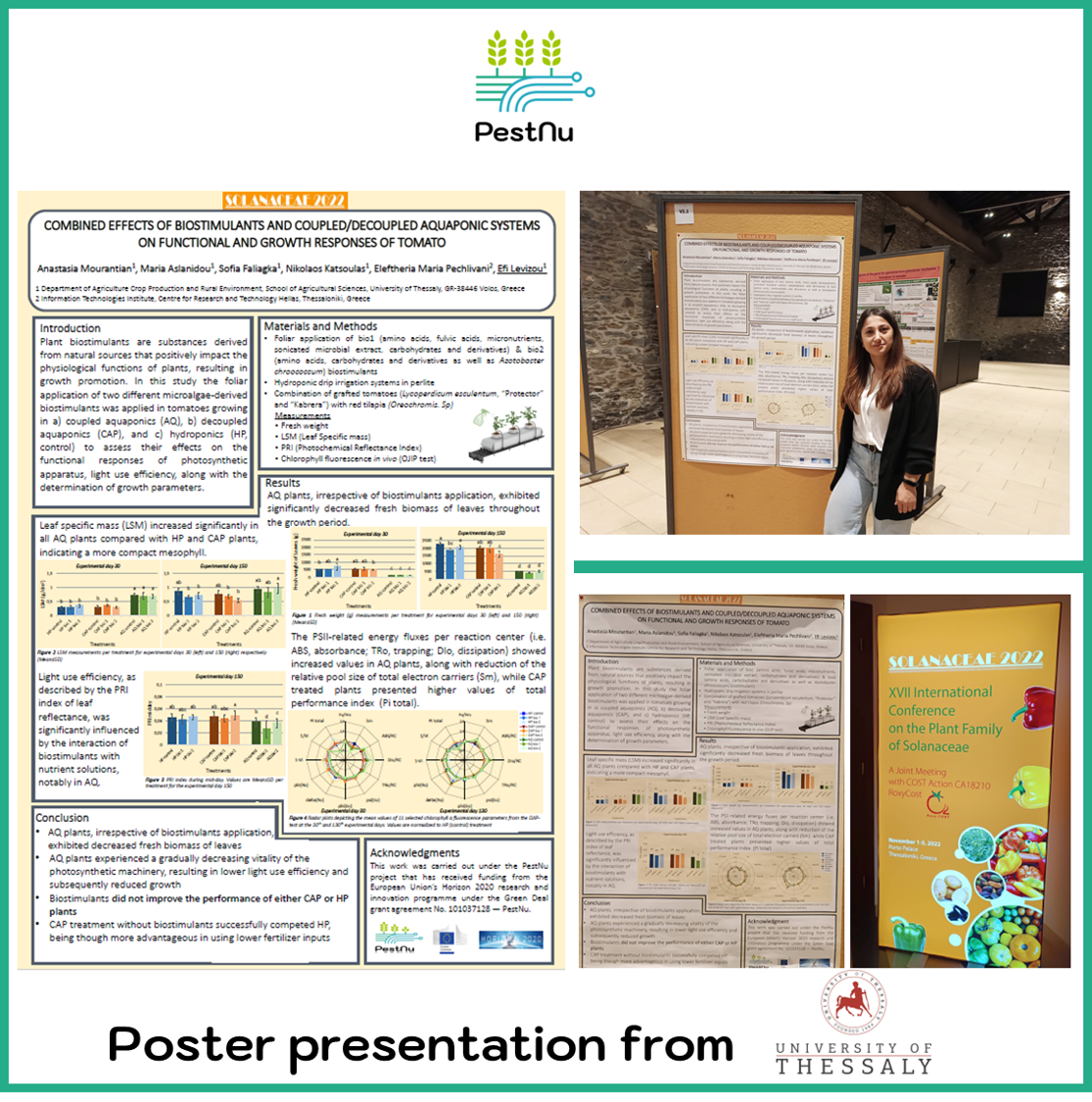The University of Thessaly proceeded to a poster presentation, namely “Combined effects of biostimulants and coupled/decoupled aquaponic systems on functional and growth responses of tomato” in XVII International Conference on the Plant Family of Solanaceae (SOL2022), in Thessaloniki, Greece on November 3rd, 2022. The work on this paper was conducted under the H2020 project PestNu.
Below you can find the abstract of the poster published.
Combined effects of biostimulants and coupled/decoupled aquaponic systems on functional and growth responses of tomato
Anastasia Mourantian1, Maria Aslanidou1, Sofia Faliagka1, Nikolaos Katsoulas1, Eleftheria Maria Pechlivani2, Efi Levizou1
1 Department of Agriculture Crop Production and Rural Environment, School of Agricultural Sciences, University of Thessaly, GR-38446 Volos, Greece
2 Information Technologies Institute, Centre for Research and Technology Hellas, Thessaloniki, Greece
Plant biostimulants are substances derived from natural sources that positively impact the physiological functions of the plants, resulting in growth promotion. In this study the effects of foliar application of two different microalgae-derived biostimulants were assessed in tomatoes growing in a) coupled aquaponics (AQ), b) decoupled aquaponics (CAP), and c) hydroponics (HP, control) for 5 months. In vivo chlorophyll fluorescence and leaf reflectance measurements were performed throughout the growth period to monitor the responses of the photosynthetic apparatus and assess light use efficiency, along with the determination of growth parameters, namely leaf specific mass (LSM) and fresh biomass production. All AQ plants, irrespective of biostimulants application, exhibited significantly decreased fresh biomass of leaves, accompanied by increased LSM indicating more compact mesophyll, compared with CAP and HP. Light use efficiency was significantly influenced by the interaction of biostimulants with nutrient solutions. These differences were clearly associated with dynamic responses of the photosynthetic apparatus, notably the increase of dissipated energy flux per reaction center in AQ plants, along with reduction of the relative pool size of total electron carriers. Collectively, these events resulted in significantly lower values of the total photosynthetic efficiency index in AQ plants. In conclusion, AQ tomatoes experienced a gradually decreasing vitality of the photosynthetic machinery, which was reflected in reduced growth and could not be recovered by biostimulants application. The latter did not improve the performance of either CAP or HP plants. Nevertheless, CAP without biostimulants successfully competed HP, being though more advantageous in using lower fertilizer inputs.
Key words: aquaponics; hydroponics; biostimulants; plant function; photosynthetic apparatus
Acknowledgment: This work was carried out under the PestNu project that has received funding from the European Union’s Horizon 2020 research and innovation programme under the Green Deal grant agreement No. 101037128 — PestNu
The event’s agenda and all the abstracts which got presented can be found on the following link:

